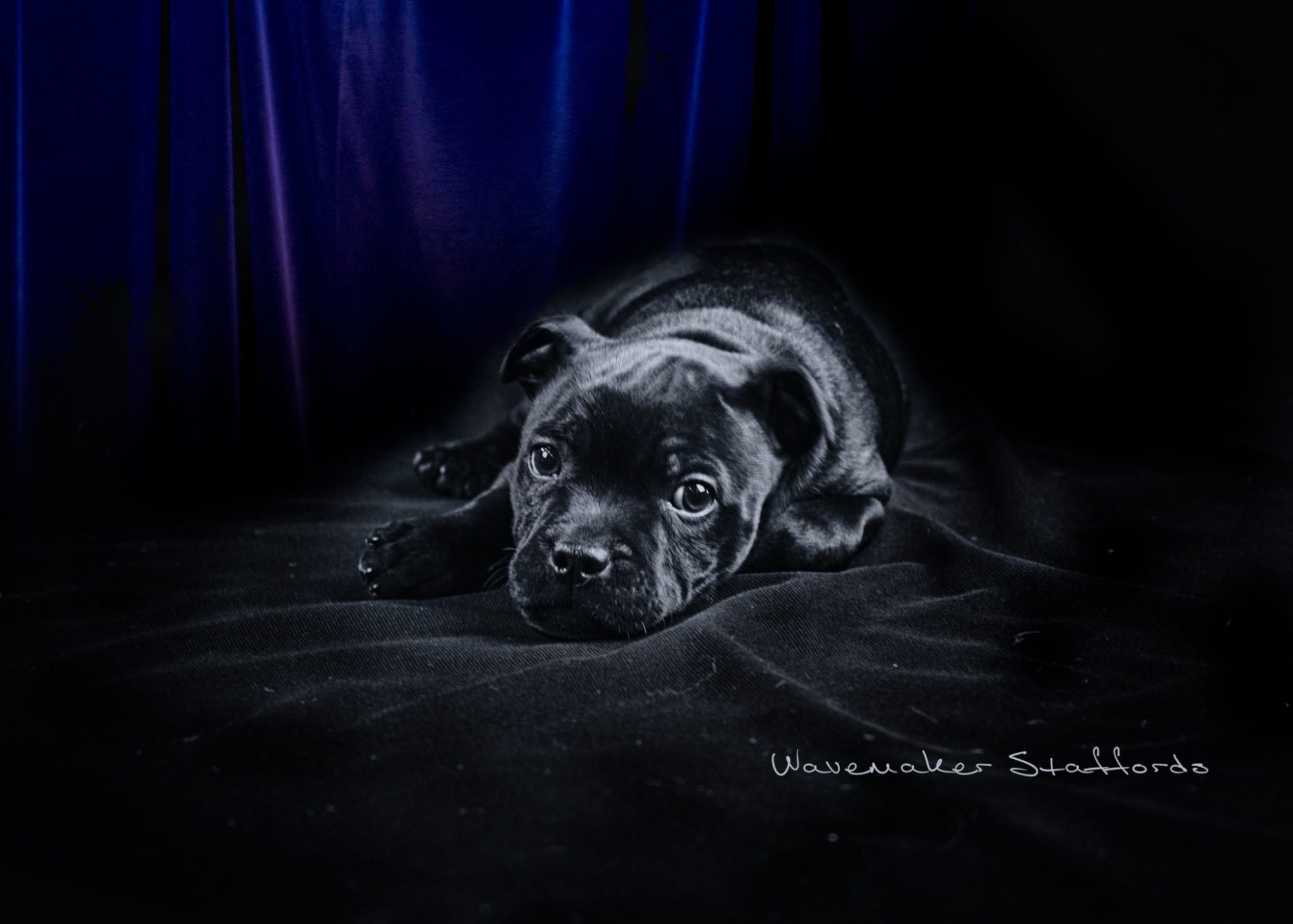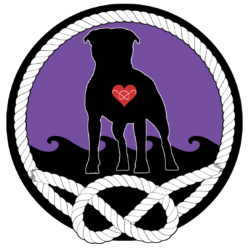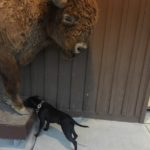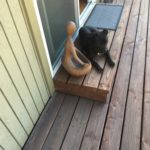For years I have used the above hashtag much to the annoyance of some. I have had people ‘unfriend’ me on social media (that’s okay with me btw everyone doesn’t need to follow me). I have had 100’s of discussions on this topic. My viewpoint can be more easily described in the following blog post by someone I follow. I didn’t write the following however it sounds exactly like I had:
Not long ago, we wrote about the Staffordshire bull terrier. We explained why we share our home on wheels with two Staffordshire Bull terriers, Mojo and Venus.
Whenever we walk in a city or travel by public transport, we frequently hear comments such as: ‘Cute stafford!’ or ‘I’ve got one just like that.’ When we do find ourselves in a conversation, people often wonder why our dogs are so small. ‘They must still be puppies, right?’ Another sentence we commonly hear is ‘My neighbor/sister/mother-in-law/friend (take your pick) has a staffy too, but it is much bigger and bulkier!’
We usually just swallow our pride. Often though, we can’t refrain from explaining that Mojo and Venus are purebred Staffordshire Bull Terriers who both fit the breed standard. And to be honest, it’s not about pride at all.
We can’t judge people for thinking it either. It’s just what everyone is told, by hobby breeders, by every media outlet, by friends and family, and et cetera. So how could we even blame them.
Just a recent example
Recently, we were offered a position working on a campsite. We indicated that we owned dogs, explained that our dogs are purebred Staffordshire bull terriers, and that they would be taken along to the campsite with us. This was alright. The employee would try to find a campsite that allowed dogs, so that we could work for them. Three days later, we were informed that the employee’s colleague also owns a ‘stafford’. He was certain that those dogs are not allowed on campsites in the country. Our breed was supposedly classified as one of the two categories of ‘dangerous dogs’ in France.
What our contact person failed to realize, is that her colleague did not own a Staffordshire bull terrier. More importantly though, she did in fact not read up on the rules thoroughly. Though the American Staffordshire Terrier (which is also commonly referred to as staffy) is banned in France, they are not to be confused with the Staffordshire Bull Terrier. They are a different breed entirely. The fact that people have become accustomed to referring to groups of dogs under one term has resulted in difficult situations for owners of pure bred Staffordshire Bull Terriers.
After all, there were no vacancies on campsites where dogs were allowed, but we are welcome to work for them next year. We sent over some clear information with good references, and our purebred Staffordshire Bull Terriers are now welcome, too!
Staffy has become a dangerous grouping term
Why would we bother that people call every blocky-headed dog a staffy or pitbull? The simple answer is, it has consequences for both the public opinion about purebred dogs and their owners.
The term Staffordshire Bull Terrier starts with ‘staff’. The name will remind people of stories they might have seen or read about in the media. A big blocky-headed dog (of unknown heritage) attacking a child will be referred to as just another staffy or pitbull.
The problem here is that although these incidences rarely include purebred Staffordshire Bull Terriers, they do bear the brunt of it (and so do the American Staffordshire Terriers whom have not been involved in any incidents in the Netherlands for over 15 years). People have come to see the breed as dangerous by hearing bad publicity about ‘staffies’ everywhere. But what even is a so-called ‘staffy’? For as far as I know, it’s a non-existing breed.
All dogs with a similar appearance, both purebred and mixed breeds from responsible breeders, backyard breeders, and shelters, are grouped together and bundled under one name. Why? Because it’s simple. But effective it certainly is not. Though their appearance may show some similarities here and there, their personalities often do not.
Even professionals do not seem to care
At university, I came to realize that even professionals can’t distinguish between breeds and do not care to label dogs correctly. During my time working in the largest animal shelter in the Netherlands, there were numerous blocky-headed mixed breeds with floppy or pricked ears, short and long legs, squished noses, undershot jaws, and … You name it. All of them were referred to as staffies, both amongst colleagues as well as to potential future owners. Staffies where said by the manager to make up 75% of the shelter’s population, yet during my stay I only saw one individual that clearly resembled the Staffordshire Bull Terrier and no American Staffordshire Terriers whatsoever.
Shortly after my time in the shelter, one of the dogs labeled as a so-called ‘staffy’ was rehomed. Within a week, it ended up biting a child. The dog was tall (his head reached my hips), had floppy ears, legs that belonged to a giraffe and a strong undershot jaw. In no way did it resemble either a Staffordshire bull terrier or American Staffordshire Terrier. Five days straight articles kept popping up on the internet about how yet another staffy had bitten a child. Journalists started speculating about the need for a breed specific legislation.
If the law were to go through, it would mean that purebred Staffordshire Bull Terriers would get punished for something they didn’t do. We do not mean to say that we have a perfect solution for the problem – as there certainly is a grave issue with a strong increase in incidents. But we do know that we should seek a solution that fits the issue at hand. We should rather focus our attention on all the (mixed) breeds and their irresponsible breeders and owners!
Characteristics
We don’t mean to say that mixed breed dogs should be discriminated against. On the contrary. Though characteristics are specified for every breed of dog, individuals differ. Both genetics and environmental circumstances play a strong role in the behavior that any dog will display.
One must simply remember that individuals referred to as staffies, most times do not resemble the Staffordshire Bull Terrier breed and its characteristics. A mixed breed that looks like a Labrador retriever does not influence the way we look at the Flat Coated retriever, does that make sense?
Grouping all dogs with some similar features, read blocky head, under the term ‘staffy’ has caused ignorance in the public and media. People no longer recognize purebred dogs from mixed breed individuals. Nor do they make the distinction between American Staffordshire Terrier and Staffordshire Bull Terriers, while there is in fact a large difference between the breeds. And above all, we’d hate to see purebred Staffordshire Bull Terriers get banned due to badly informed owners and irresponsible breeders of (mixed breed) dogs.
Even between breeders of every breed, there are many differences to be found! Venus is a sports-bred Staffordshire Bull Terrier, and Mojo is a show-bred Staffordshire Bull Terrier. Though their appearance is very similar, their behavior is incredibly different. Staffordshire Bull Terriers are often referred to as nanny-dogs on many websites, and they are friendly and happy dogs. But we’ll be the last person to say that the breed is your ‘perfect calm family dog’. But we’ll talk all about that in two weeks!



















